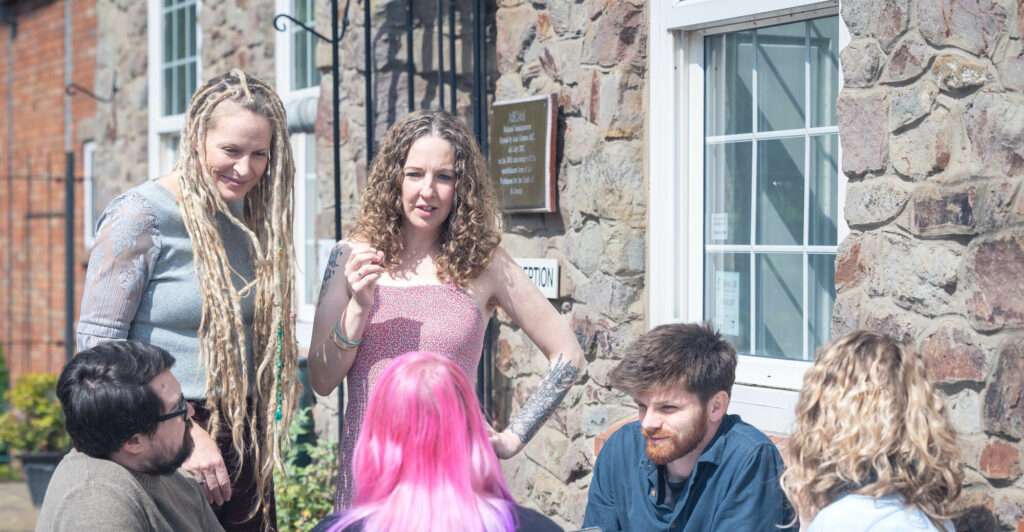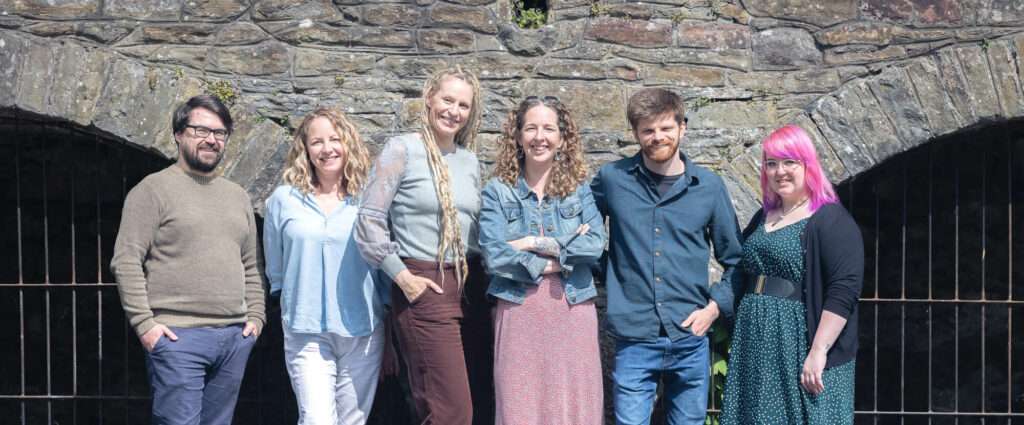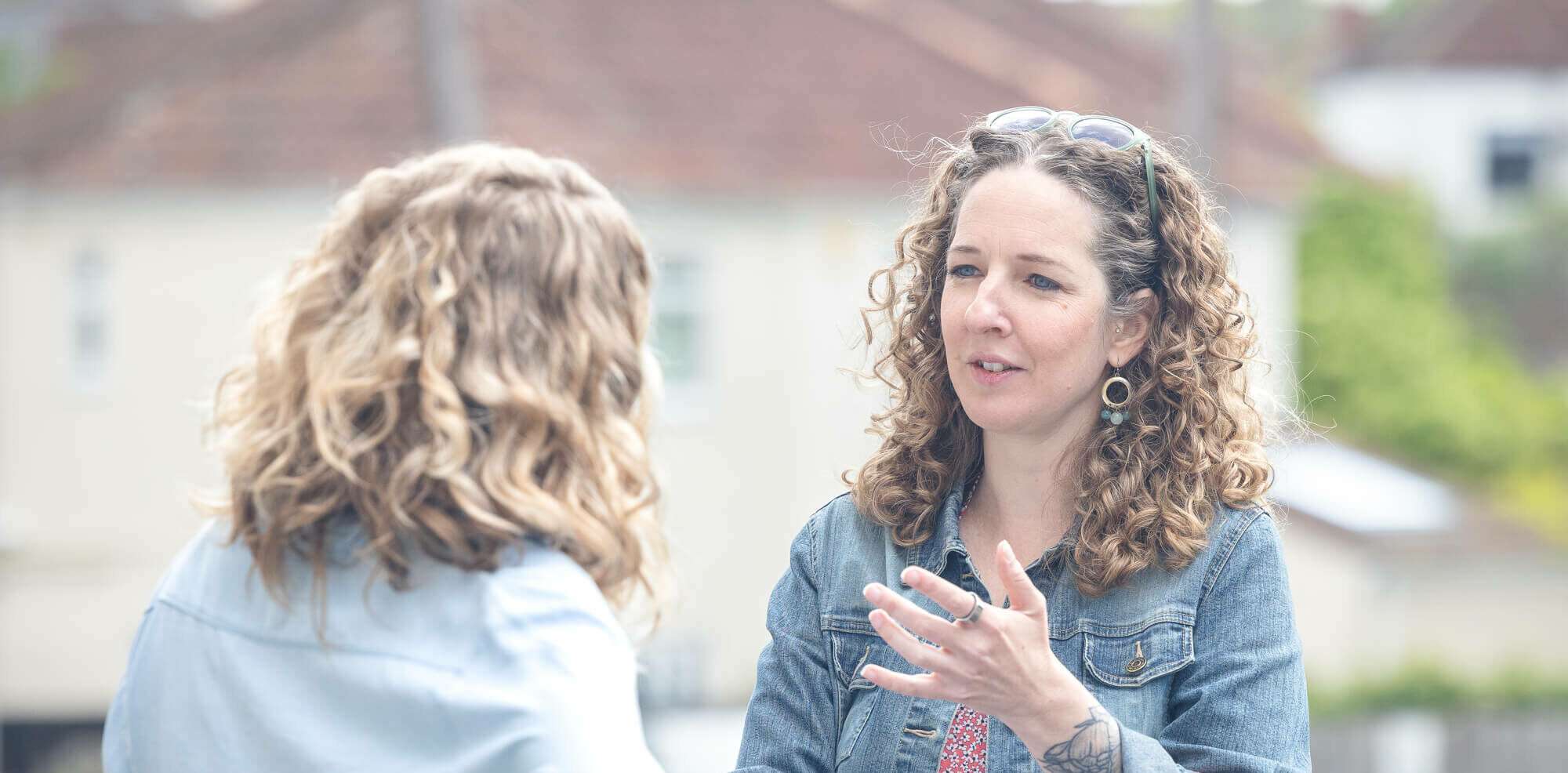
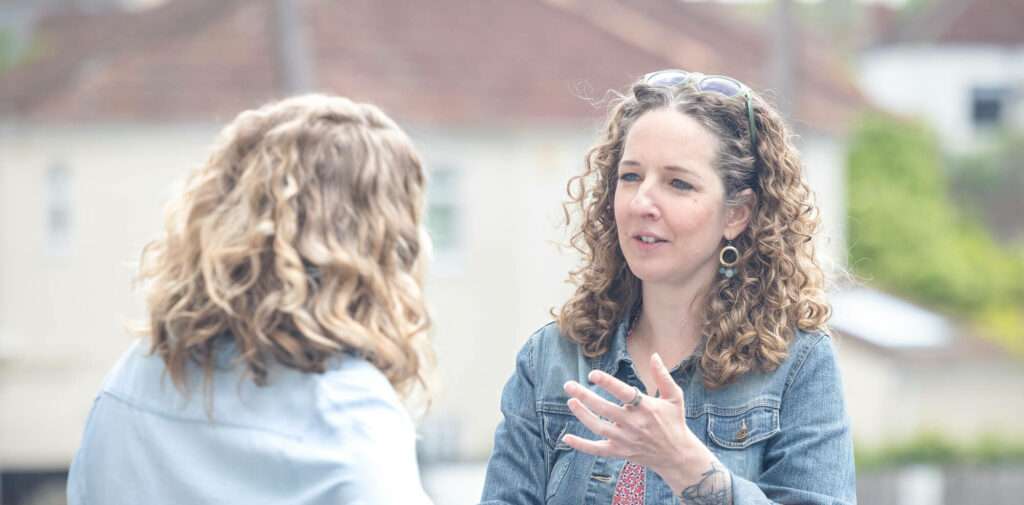
Storytelling in B2B – and why marketers don’t know what stories are
Why do so many marketers think of completely different things when they think of story? And why do so many get confused and miss the point? Our #EditorInResidence, Sam Whitlock, untangles the knot and shows you how brand narratives, anecdotes and tales can help you resonate with an audience.
Let’s start with the inevitable anecdote…
Approximately four and half years ago, I was dead set on joining a copywriting agency. No one was hiring in Bristol or anywhere near it, so I had to send some speculative applications. And because I was basically emailing people to pay me to write, these emails had to be damn well crafted, right?
How did the speculative email I sent to Rin Hamburgh & Co begin?
The first line started thus:
To the team at [name of RH&Co competitor]…
I was off to a flying start.
It was a copy-paste email with word-tweaks. I had sent something similar to another dozen agencies but the only email with an error on it – with one crucial word-tweak missing – was sent to RH&Co and addressed to someone else.
I noticed the error the moment I sent it, and I wrote the application off as a loss.
In the next week, only one of the dozen agencies got back to me. Rin wanted to have a chat. And a little while later, I found myself working as a copywriter at RH&Co, which was then barely a year-old company.
It was like getting away with murder but perhaps without the same level of blood guilt. Didn’t they notice I addressed my application to the wrong company?
A few months go by… I’m at some entrepreneurial award event or other, with the RH&Co gang – there were just four of us back then – and Rin turns to me, wine in hand, and says, “So… you know you wrote the wrong company name on your first email to us?”
There was a moment… and then we both burst out laughing.
In her words, all that mattered to her was that my application was “well-written”, so she decided to give me a chance – and a ribbing months later.
End of anecdote
What’s the purpose of me telling you that story? To show that we don’t take ourselves too seriously at RH&Co? To show that we value good writing over perfection? To show that we’re human?
If we made that anecdote into a video, we’d probably be unlikely to end it with a RH&Co logo and our strapline: You don’t need many words, just the right ones. Unless we were being very ironic.
I’ll tell you what it’s not: a lead gen narrative or an advert. It’s not an analogy and nor is it a precursor to a pitch that everyone needs an editor (although they do). And in case you were wondering, I don’t have any tech to sell that will stop you from making dumb mistakes in your emails.
What it is, is a story. And many brands have forgotten what that means.
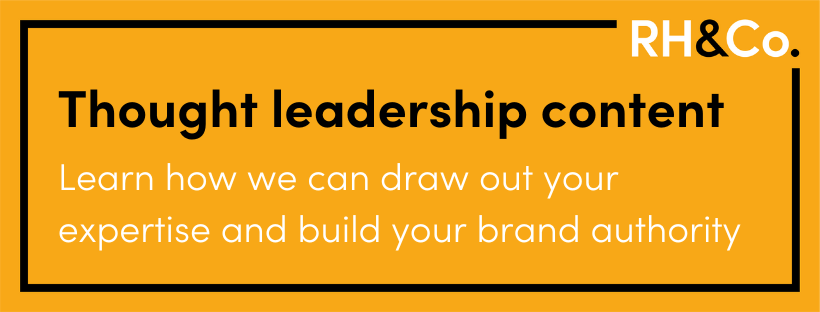
The myths of storytelling
In the marketing and business world, almost everyone has a take on storytelling. Usually people speak of story as some kind of blend of common sense and neuroscience, and they sometimes elevate marketing to something bordering on mysticism.
Here are some of the lines you can stumble across out there.
- “Storytelling is an art. Not a process, method or technique.”
- “A brand is a story.”
- “Stories constitute the single most powerful weapon in a leader’s arsenal.”
Depending on who is making the case, they’ll usually throw in the thought that we’ve been telling stories since the dawn of time – back in the good old days of sitting around campfires, eating wild berries and looking for inspiration to hunt the next mammoth.
Someone will probably say this means stories are the primordial way to do inbound marketing. Eventually someone, either a marketing guru or an ex-producer from the BBC, lays down their ace: Stories make us human.
Which is all fine and well. But then marketers draw the wrong conclusions…
Great delivery with no self-disclosure and people still won’t feel connected to you. Too much self-disclosure without the right delivery and you’ll simply sound like you’re oversharing.
Brand narrative and storytelling are not the same
Many marketers talk about story but usually they’re talking about something else entirely.
They often talk about:
- Drawing together the emotions and facts behind your brand
- Communicating the history, future and purpose of your brand
- Telling a cohesive narrative consistent across all communication
Which sounds like solid marketing practice, you’d probably agree.
All the same though, this sounds pretty different to the kind of stories I grew up reading. In fact, I think they’re describing a different beast altogether.
Brand narrative.
Marketers, brand builders and consultants frequently use the term brand narrative interchangeably with story, and it gets pretty confusing.
Now, before we move on… let’s agree that brand narrative is essential for brand building. It’s core to both your consumer value proposition and your employee value proposition. If you do brand narrative really, really, really well, it can even help you disrupt a market or, as some leadership consultants tell us, transform the culture of an organisation.
But… contrary to what people on the internet might tell you, this is not the kind of storytelling that ‘makes us human.’ It’s not the kind of tale that traces its roots to the pre-neolithic age, and it doesn’t work neuroscientific-magic on the brain (at least not the kind people usually cite).
While brand narrative is an important part of clarifying and communicating your message, no consumer or business audience worth their salt is going to lower their guard enough to let brand narrative impact their heart and soul.
Here’s why.
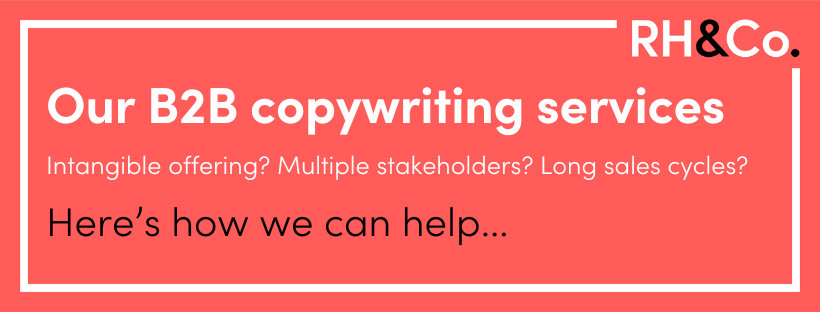
Stories are the property of humans, not brands
The Cambridge Dictionary definition of a story is “a description, either true or imagined, of a connected series of events.” And as far as I can deduce there’s two types of ‘descriptions of events’ that fall into quite a different category to brand narrative.
- A human account
The first type of story – a human account – is someone’s personal, true experience of events. This is what fuels many journalistic ‘stories’ and feature articles. These are the kind of personal stories that friends exchange when they haven’t caught up in a while, or that pass down through familial generations, or that CEOs publish in memoirs.
This type of story is powerful because it’s real. It gives an audience a glimpse of a lived experience, which in this post-modern era can often speak louder than statistics.
A human account is made more or less powerful by two factors:
- Self-disclosure: a person reveals personal information that gives you a sense of intimacy with them.
- Delivery: the context, timing and tone of what you say. You can disclose the same personal detail with humour or anger, whimsy or weight.
Great delivery with no self-disclosure and people still won’t feel connected to you. Too much self-disclosure without the right delivery and you’ll simply sound like you’re oversharing.
Say the right things at the right time, like a comedian who has honed their routine, and you’ll achieve higher levels of ‘interpersonal neural synchrony’ – associated with quality communication and leadership in a group.
A brand is not a person to feel socially connected to, a brand cannot self-disclose anything that’s not good PR, and audiences are fully aware that most of the time, when a brand starts telling a story of tension, they are being sold to, subtly or not.
- A story of tension
The second type of story is characterised by friction, uncertainty, and a sense that something hangs in the balance.
This is the preoccupation of novels, bio-pics, and stage magicians like Michael Weber, who first said “whoever tells the best story wins.” It’s the kind of story that has characters or players, and a conflict that propels its audience forward to find a sense of catharsis.
A story of tension is the kind of tale that works magic on the brain. A narrative with a dramatic arc can actually release oxytocin, the same chemical that is released when your brain tells you ‘this person can be trusted.’ It’s why we can, time and time again, feel so deeply and empathetically for the fictional characters we get to know.
Really, this is the domain of art, media and entertainment, not marketing, PR and business growth. For a tale of tension to work, there needs to be a sense that something could go wrong… not a sense that a product could be revealed.
Some companies do pull it off though. For instance, Xbox’s docuseries Power On takes you blow by blow through the good, the bad, and the ugly history of the company in a startlingly unfiltered fashion. Likewise, Salesforce’s The Shift pulls back the curtain on a few high growth companies as they try not to crash on the hairpin bends of market change.
Here’s the thing: stories of tension are always, always, always about people. Or an animal, alien or anthropomorphic creature that an audience projects personhood onto. They’re not about ideas or products or even putting a hypothetical customer at the heart of the story (great for brand narratives, rubbish for tension), and so we come to a sticky point.
Why brands fail at storytelling
Maybe stories do make us human but no one is going to mistake your brand for a human.
A brand is not a person to feel socially connected to, a brand cannot self-disclose anything that’s not good PR, and audiences are fully aware that most of the time, when a brand starts telling a story of tension, they are being sold to, subtly or not.
The 2022 Edelman Trust Barometer UK report reveals that 60% of people believe businesses only make commitments to support their marketing efforts, and their perception of the arc of your story is going to be similar.
The presence of brand will likely create a halo effect that reduces the ability of an audience to get lost in the story and be affected by it.
But not all is lost!
The same Edelman report shows that trust in people (including technical experts and subject authorities) is high, and that has major implications.
There’s an opportunity here for:
- User-generated content
- Articles authored by experts
- Employee-generated content
- Influencers
- Interviews
Individuals have the most trust right now, and they’re also the ones who sit at the heart of effective stories. They can present real lived experiences and true tales of tension, and if you can put these in front of your audience’s eyes, you’re far more likely to see emotional resonance and dramatic results.
That’s not to say you can’t give the straight sell or the brand narrative drip feed, and it doesn’t mean you can’t throw your logo and strapline up at the end of a high budget ad. All these things still have their place… but if you want to see the kind of audience connection that marketers have been trying to create with stories for years, you need to pull back a second.
Behind your brand are people. They’re the ones with a story your audience might want to listen to… it’s up to your brand to not get in the way.
Back to hompeage




